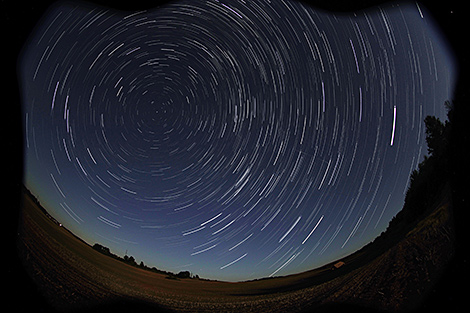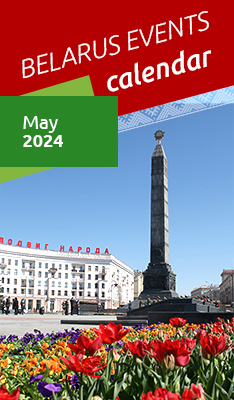Opinions & Interviews
Belarus’ Academy of Sciences on satellites, technologies, manned cosmonautics

An archive photo
Belarus develops space technologies and makes equipment for outer space. The Belarusian satellite for the remote sensing of Earth, the communications satellite Belintersat-1, and Belarusian State University’s educational nano satellite BSU Sat-1 are now in a near-Earth orbit. The upcoming flight of the Belarusian cosmonaut will add a new record to the history. Preparations for this flight, plans to launch new satellites for the remote sensing of Earth, and international cooperation in space industry were discussed by representatives of the National Academy of Sciences of Belarus (NASB) at a press conference.
What satellites are now in orbit?
Academician-Secretary of the Physics, Math, and Informatics Department of the National Academy of Sciences of Belarus Aleksandr Shumilin noted that Belarus has always taken an active part in space exploration. In 2004 the head of state signed a decree to entrust the National Academy of Sciences of Belarus with pursuing a unified state policy, with coordinating and regulating activities in the area of studies and peaceful uses of outer space. The country has acceded to the Treaty on Principles Governing the Activities of States in the Exploration and Use of Outer Space, including the Moon and Other Celestial Bodies.
Aleksandr Shumilin said: “And in 2012 we became a space power by launching our first spacecraft that we still control today. A lot of work was done.”
The data the BKA satellite provides is used to ensure national security, monitor natural and man-caused emergencies, study the state and predict the development of natural landscapes, agriculture, maintain the state land registry, design, reconstruct, and build roads. Satellite images represent the basis for creating topographic and navigation maps. They are widely used in geological prospecting and aerospace education. Space data is crucial for many information technologies.
The official gave an example of how useful space data can be. “A fire season is ahead of us. Forest fires can do a lot of damage. Thanks to space technologies we quickly detect fires in Belarus, pass on the information to the relevant agencies and therefore measures are taken promptly,” he pointed out.
Technologies for the space industry are being developed in Belarus as well as new composite materials and new solutions for protecting microelectronics. “Our Belarusian satellite has been flying for over ten years already although the standard satellite lifespan is five years. In other words, we’ve already exceeded it by two times. It saved a considerable amount of money. The equipment designed and made in Belarus has proven its reliability,” Aleksandr Shumilin stressed.
In his words, seven programs in the area of space exploration have been implemented together with Russian colleagues. Two new programs have been adopted. Belarus and Russia continue cooperation and joint research in outer space. Belarus also advances interaction in the space industry with other countries of the Eurasian Economic Union and the Commonwealth of Independent States.
“We have also launched our own communications satellite in association with Chinese colleagues. In 2018 the satellite made by Belarusian State University students became the third satellite in orbit. It is very important for training personnel for the space industry,” the official pointed out.
Plans to launch new spacecraft
According to Aleksandr Shumilin, work is in progress with Russian colleagues on designing and manufacturing new satellites with the resolution of 0.5m and with the super high resolution of 0.35m. “We intend to launch the satellite with the 0.5m resolution in the near future and with 0.35m resolution within 5-6 years. I’d like to emphasize that such technologies are virtually non-existent in the world,” he said.
Igor Strashko, Deputy Director for Production of the state enterprise Geoinformation Systems of the National Academy of Sciences of Belarus, had a few comments about the launch of the Belarusian-Russian satellite with the 0.35m resolution. He said: “If you look at it globally, we are creating not simply a satellite but a Belarusian-Russian space system. The preliminary design has been finished. How Russian and Belarusian enterprises will work together to make it has been determined. A schedule for creating the system has been agreed. The satellite is tentatively scheduled for launch in 2028,” he said.
Aleksandr Shumilin said that the second student satellite is supposed to be launched this year or the next one. It has been reported earlier that it will be a product of Belarusian State University, too, but the nano satellite has evolved considerably as far as its components and education capabilities are concerned.
The academy is also about to start developing technologies for launching micro satellites – satellites, which operate at a low orbit and are used for polishing various technologies and for monitoring purposes, for instance, for monitoring the area around the nuclear power plant.
Belarusian cosmonaut
Belarus will explore a new area of research – manned space flights. Belarus’ natives, who have been to outer space, are known well in the country. Piotr Klimuk and Vladimir Kavalenok flew into outer space back in the USSR days while Oleg Novitsky is a pilot-cosmonaut of the Russian Federation. Now time has come for a Belarusian cosmonaut to fly into outer space. She will represent Belarus. The relevant agreements have already been reached with the Russian Federation.
“Various specializations exist: a medic cosmonaut, a tester cosmonaut. We will have a Belarusian researcher cosmonaut. A scientific research program has been prepared. All the main procedures have been completed. Two women have been selected,” Aleksandr Shumilin said.
Piotr Vityaz, Head of the Aerospace Activities Office of the Staff of the National Academy of Sciences of Belarus, added that the candidates had been selected. The main candidate and the backup candidate have been chosen. Now it is necessary to take a closer look at the research program developed by the academy. “Once we reconcile it with Roscosmos, the cosmonauts will go and train for the flight itself. All the matters concerning the flight’s timing will be handled in compliance with Roscosmos’ program later on,” Piotr Vityaz said.
Aleksandr Shumilin also mentioned what the Belarusian cosmonaut will do once in orbit. “Without a doubt the cosmonaut will carry out research and testing of our imaging spectrometer orientation system aka SOVA. It was developed by the Education Ministry system. By sending our own cosmonaut, we want her to use equipment designed and made in Belarus in order to observe Earth from the outer space,” she stressed.
In his words, studying upper layers of the atmosphere and forests also looks topical. “Over 40% of Belarus’ territory is covered by forests. We cannot always detect the beginning of a forest disease from the ground. Space technologies can detect possible diseases and help make timely decisions,” the academician-secretary said.
“To be an outer space explorer is to play in the major league. It means prestige and the highest accomplishments and pride for the country,” Aleksandr Shumilin concluded.







 print version
print version make home page
make home page add to bookmarks
add to bookmarks

